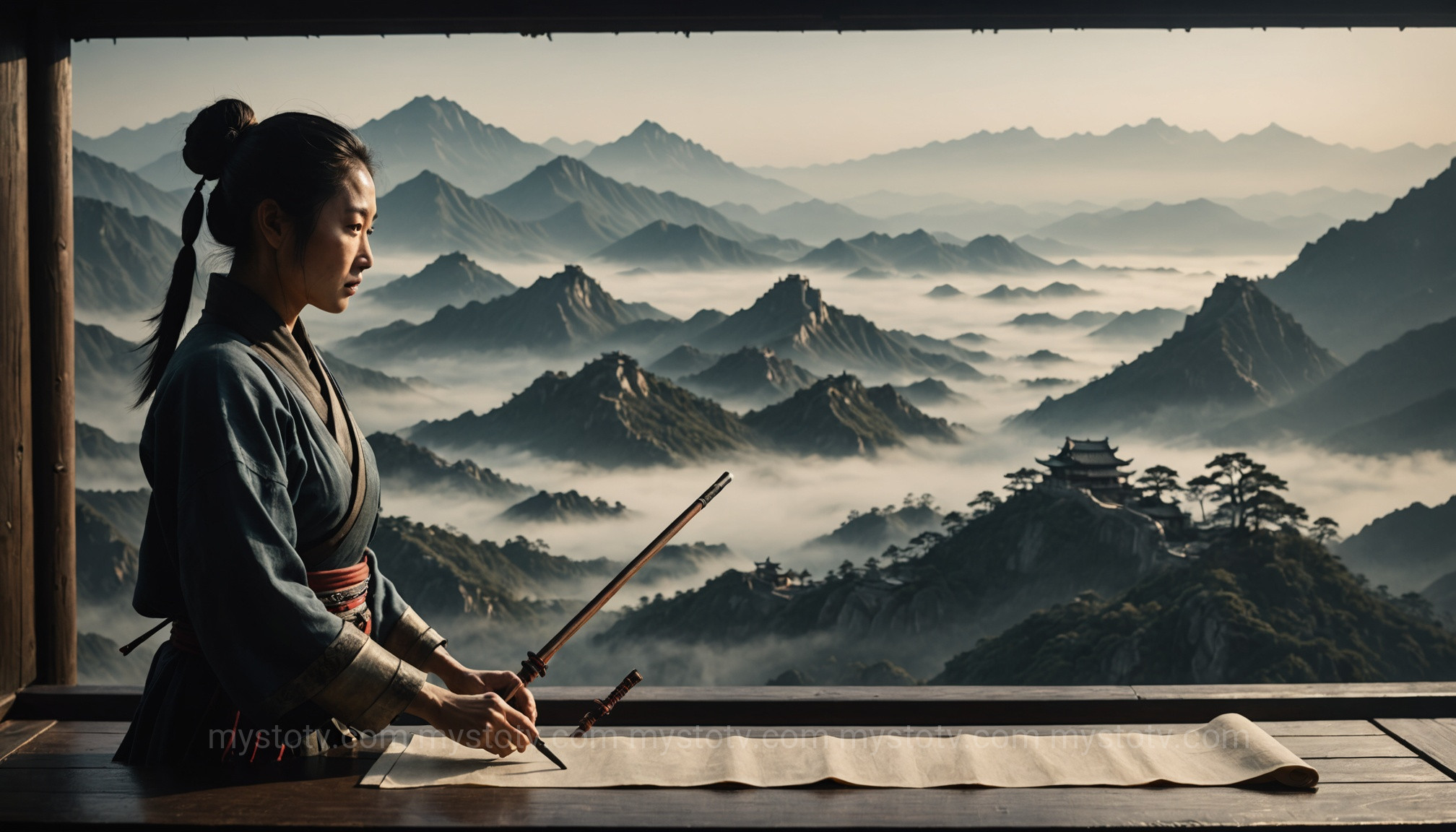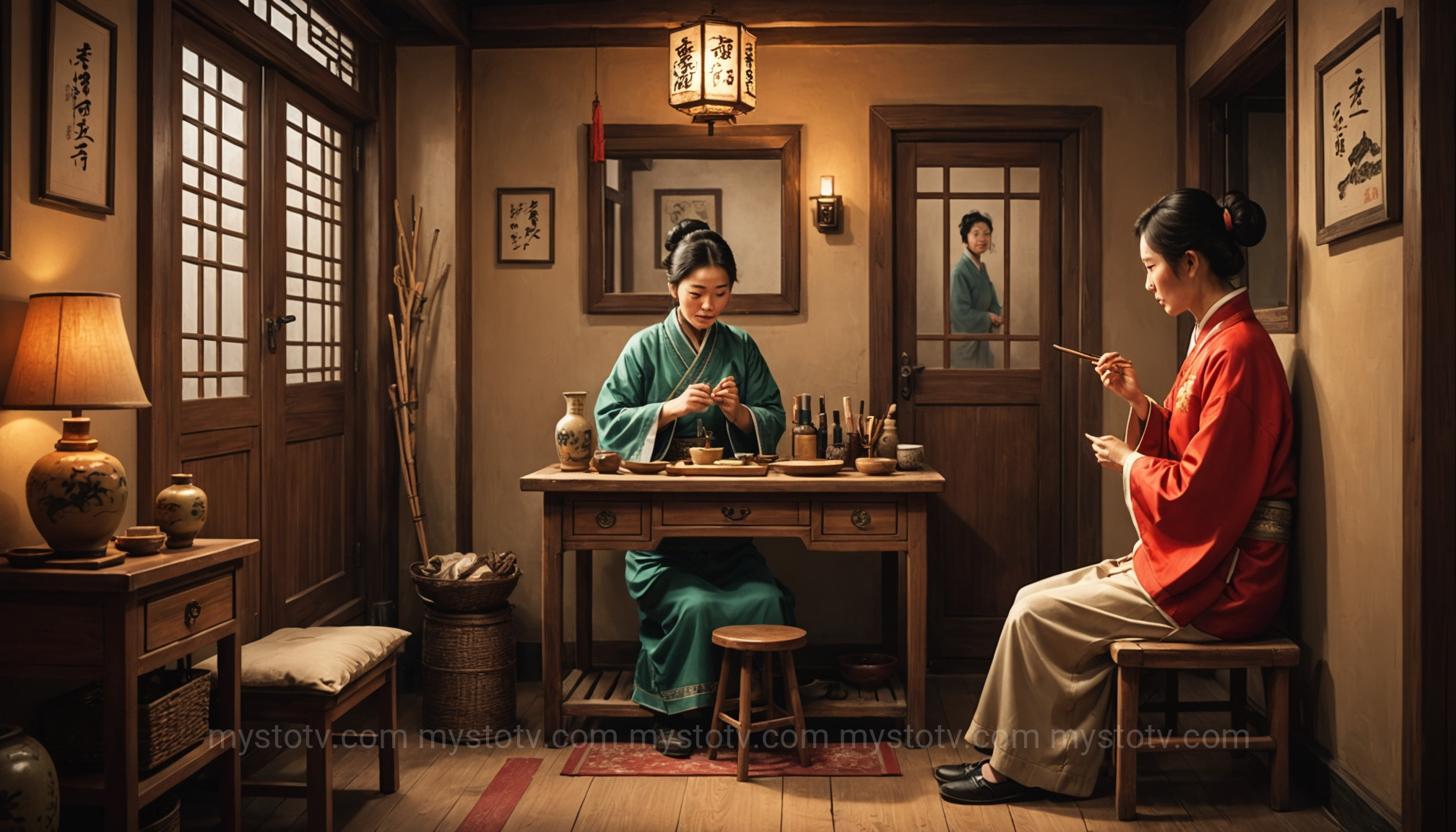Contents
- 1 Unpacking the Legend: What is the Real Story of Mulan?
- 2 No Mushu, No Romance: Key Differences in the Real Story of Mulan
- 3 A Warrior, Not a Princess: The Badass Real Story of Mulan's Military Career
- 4 The Homecoming: Why the Real Story of Mulan's Return is More Powerful
- 5 Mulan Through the Ages: How the Real Story of Mulan Evolved
- 6 FAQ About the Real Story of Mulan
- 7 Conclusion: The Enduring Power of the Real Story of Mulan
- 8 References
Unpacking the Legend: What is the Real Story of Mulan?

Before we dive into the differences, it's crucial to understand the source. The real story of Mulan originates from a narrative poem called the Ballad of Mulan (木蘭辭, Mùlán Cí). First transcribed in the 6th century, its original version is believed to date back to the Northern Wei dynasty (386–534 AD), a period of intense conflict in China. The ballad is concise, consisting of just over 300 characters, yet it paints a vivid picture of its hero.
The poem begins not with a clumsy attempt at matchmaking, but with Mulan weaving at her loom, sighing with worry. She has seen the conscription notices—the Khan is mobilizing his army, and every family must send one male to fight. Her father is old and her younger brother is just a child. In a moment of decisive action driven by filial piety, a core Confucian value of respect and duty to one's family, she resolves to take her father's place. There's no dramatic haircut with a sword; she simply buys a horse, a saddle, a bridle, and a whip, and bids her family farewell. This version of the story is grounded in familial duty and quiet resolve, not a desire to "prove herself" in the modern sense.
The historical authenticity of Mulan as a single person is a subject of scholarly debate. No independent records from the Northern Wei period mention her. Most historians view her as a legendary figure, a composite character embodying the virtues of courage and loyalty that were highly prized. However, the legend itself is a powerful historical artifact, reflecting the social realities and cultural values of its time, giving us a window into the core of the real story of Mulan.
No Mushu, No Romance: Key Differences in the Real Story of Mulan
The Disney adaptation, while beloved, took significant creative liberties. These changes created a more commercially friendly narrative but stripped away much of the original's unique character. Understanding these differences is key to grasping the essence of the real story of Mulan.
The Motivation for War: Duty, Not Dishonor in the Real Story of Mulan
In the Disney film, Mulan's primary motivation is complex; she fails the matchmaker, feels she has brought dishonor upon her family, and wants to prove her self-worth. In the ballad, her motivation is crystal clear and singular: to protect her father. The opening lines are about her anxiety over the draft list and her father's inability to serve. Her decision is immediate and practical. This shifts the focus from an internal journey of self-discovery to an external act of profound familial sacrifice. She isn't trying to find her place in the world; she's trying to save her family from falling apart.
The Absence of Supernatural Aid and Comic Relief
Perhaps the most jarring difference for fans of the animation is the complete lack of Mushu, Cri-Kee, or the bumbling ancestors. In the original poem, Mulan is entirely on her own. She has no guardian spirit to give her advice or a lucky cricket to save her. Her survival and success are products of her own intelligence, endurance, and skill. This makes her accomplishments all the more impressive. She endures "a hundred battles" and travels "ten thousand miles" through sheer grit. The real story of Mulan is a testament to human resilience, not divine intervention.
A Story Without a Love Interest
The romance between Mulan and Captain Li Shang is central to the Disney movie's plot. In the ballad, there is no romance whatsoever. Mulan serves for twelve years alongside her comrades, and none of them ever realize she is a woman. The idea of a commanding officer falling for a recruit is completely absent. The original narrative is not concerned with romantic love; its focus remains squarely on Mulan's dual duties as a soldier and a daughter. This lack of a romantic subplot elevates the theme of camaraderie and professional respect among soldiers. Her powerful return home is based on this platonic relationship with her fellow soldiers.
A Warrior, Not a Princess: The Badass Real Story of Mulan's Military Career

Disney's Mulan becomes a hero after a single, albeit clever, military victory involving an avalanche. The Mulan of the ballad is a seasoned, high-ranking officer forged by years of warfare. The poem states:
"She traveled ten thousand miles to fight in battles,
Crossing mountain passes as if flying.
Northern gusts carried the sound of the watchman's clapper,
Chilly light shone on her iron armor.
Generals died in a hundred battles,
And valiant soldiers returned after ten years."
This isn't a brief training montage followed by one fight. This is twelve years of relentless campaigning. She survives when generals die around her. The poem implies she not only survived but thrived, rising through the ranks on pure merit. When the war ends, she is summoned before the Khan (the Emperor) to be rewarded. He offers her a high-ranking post in the central government and great riches. This detail underscores her success; she wasn't just a good soldier, she was an exemplary one, recognized at the highest level. The badass nature of the real story of Mulan lies in her long, distinguished, and entirely unglamorous military service.
The Homecoming: Why the Real Story of Mulan's Return is More Powerful

The ending of the ballad is perhaps its most powerful and culturally significant part. After twelve years of service, Mulan is offered immense honor and wealth. She turns it all down. She tells the Khan:
"Mulan has no use for a ministerial post.
I wish to borrow a swift-footed camel,
To take me back to my hometown."
Her only desire is to go home. This rejection of fame and fortune in favor of returning to her family and her former life is the ultimate expression of filial piety. Her duty was to her family first, and with the war over and her father safe, that duty was fulfilled. The state's rewards were secondary.
The climax is not a public revelation but an intimate one. Her family rejoices upon her return. She sheds her armor, puts on her old dress, does her hair, and applies makeup. Only then does she step out to meet her comrades who have escorted her home. They are, understandably, "amazed and bewildered." For twelve years, they had fought alongside her, believing she was a man. The poem ends with a famous quatrain that serves as a profound commentary on gender:
"The male rabbit's feet hop and leap,
The female rabbit's eyes are soft and blurred.
But when the two rabbits run side-by-side,
Who can distinguish the buck from the doe?"
This final metaphor suggests that in times of crisis, and when judged by competence and action, gender is irrelevant. Skill, courage, and duty are what matter. It's a remarkably progressive message, making the ending of the real story of Mulan a powerful statement on gender equality that feels centuries ahead of its time.
Mulan Through the Ages: How the Real Story of Mulan Evolved
The 6th-century ballad was just the beginning. The legend of Hua Mulan has been retold countless times in Chinese culture, each version adapting her story to fit the values of its era. During the Ming dynasty, a play by Xu Wei added more dramatic elements, giving her the surname "Hua" (花, meaning flower) and introducing more romantic and tragic themes. Later novels and operas further embellished the tale.
These adaptations often amplified her martial prowess or explored the psychological toll of her deception. Some versions have her tragically taking her own life to avoid becoming a concubine, while others give her a happy ending with a fellow soldier. The Disney film is simply the latest, and most globally famous, reinterpretation in a long line of them. Understanding this long history shows that there isn't one single "correct" version, but the original ballad remains the foundational text. The enduring appeal of the real story of Mulan is its ability to be a vessel for different cultural ideas, from filial piety and national loyalty to gender identity and female empowerment.
FAQ About the Real Story of Mulan
- 1. Was Hua Mulan a real person?
- There is no conclusive historical evidence to prove Hua Mulan was a real person. No contemporary records from the Northern Wei dynasty mention her by name. Most historians believe she is a legendary figure created to embody specific cultural virtues, though it's possible the legend was inspired by real women who fought in armies during that tumultuous period.
- 2. What does "Mulan" mean?
- Mulan (木蘭) means "magnolia." In Chinese culture, the magnolia flower is a symbol of nobility, purity, and feminine beauty. The name creates a beautiful contrast with her actions as a fierce warrior, highlighting the duality of her character in the real story of Mulan.
- 3. Did Mulan really fight for twelve years?
- Yes, the original Ballad of Mulan explicitly states she was away for ten or twelve years (the text mentions both, likely for poetic reasons) and fought in numerous battles. This long period of service is a critical element of the poem, emphasizing her endurance, skill, and the immense sacrifice she made for her family.
Conclusion: The Enduring Power of the Real Story of Mulan
While Disney's Mulan is a spectacular film that introduced a generation to an iconic hero, it is just one chapter in a long and rich history. The original poem offers a different kind of hero: one defined not by a search for identity, but by a quiet commitment to duty. She is a soldier of incredible skill and endurance who desires no glory, only the safety of her family and a return to a peaceful life. She is a woman whose actions prove that competence and courage are genderless. The ballad's Mulan doesn't need a dragon or a prince to validate her; her strength is her own. Exploring the real story of mulan reveals a narrative that is more subtle, more mature, and in its quiet way, far more revolutionary than we were ever told.
References
- Sui, Shufen. "The Legend of Mulan: A Heroine of Ancient China." World of Chinese, 15 July 2021.
- Zhang, Z., & Luo, G. (Eds.). (2012). An Anthology of Chinese Literature: Beginnings to 1911. W. W. Norton & Company. (Includes translations of the Ballad of Mulan).
- Kwa, Shiamin; Idema, Wilt L. (2010). Mulan: Five Versions of a Classic Chinese Legend, with a New Translation of the Ballad of Mulan. Hackett Publishing Company.